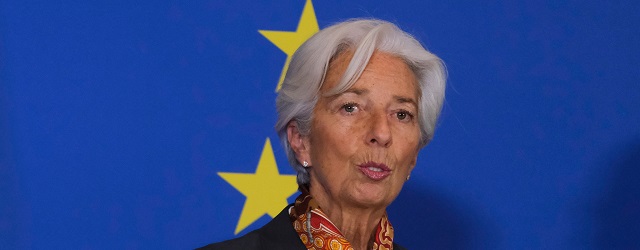Many central banks have cut interest rates to zero or less and the crisis is just beginning.

Cleveland Federal Reserve Bank President Loretta Mester worried openly last month that the central bank used up all of its interest-rate ammunition when it slashed rates to near zero. Mester was the only voting member of the Federal Open Market Committee to dissent from the full-point cut on March 15, saying she would have preferred a half-point reduction instead, leaving some dry powder for later.
“This would have preserved the option of a further cut in the funds rate, if needed, for a time when market functioning had improved and such an action could be expected to be most effective in supporting the economy,” she said.
Faced with record market volatility and economic disruption from the COVID-19 pandemic, central banks around the world followed the Fed’s sharp cut with moves of their own to lower rates and promote the smooth functioning of markets and the flow of credit to households and businesses. The European Central Bank, however, surprised analysts by failing to match the cuts by the Fed and the Bank of England, which lowered rates by a half point under its new governor, Andrew Bailey.
The ECB’s official rate is already in negative territory, at –0.25%. ECB President Christine Lagarde instead called on governments to support growth through additional fiscal measures. “We are not here to close [bond] spreads,” Lagarde said. “There are other tools and other actors to deal with these issues.” Italian bond spreads widened following her comments.
Lagarde initially refused to echo her predecessor, Mario Draghi, in saying the ECB would do “whatever it takes” to support the eurozone economy. She announced a modest package to stimulate commercial bank lending. But then, on March 18, the ECB announced a Pandemic Emergency Purchase Programme, which will see the bank launch a new wave of bond purchases, pledging to buy up to 750 billion euros ($820 billion) in government and corporate bonds and other assets. “The Governing Council will do everything necessary within its mandate,” the ECB stated.
The Fed is unlikely to adopt negative interest rates. But it is rolling out some of the same tools it used during the global financial crisis to keep the market’s plumbing working, including a backstop for the commercial paper market, funded with $10 billion from the Treasury Department’s Exchange Stabilization Fund. To further boost lending, the Fed is reducing bank reserve requirements to zero. The Fed also announced a $700 billion quantitative easing program.
The Bank of Japan stepped up its purchases of ETFs and other risky assets. “If necessary, we can deepen negative rates further,” BOJ Governor Haruhiko Kuroda said. “We can continue to pump ample liquidity into the market.”
The central banks of the developed countries announced a coordinated effort to bolster liquidity swaps “to ease strains in global funding markets.”
Kristalina Georgieva, managing director of the International Monetary Fund, said the IMF is prepared to mobilize its $1 trillion lending capacity to help countries.
Central banks are willing to go further than cutting rates, but they are running out of room to maneuver. China borrowed from state-owned banks to pump money into the stock market. Innovation will be required elsewhere, with the world on the verge of a likely recession.



